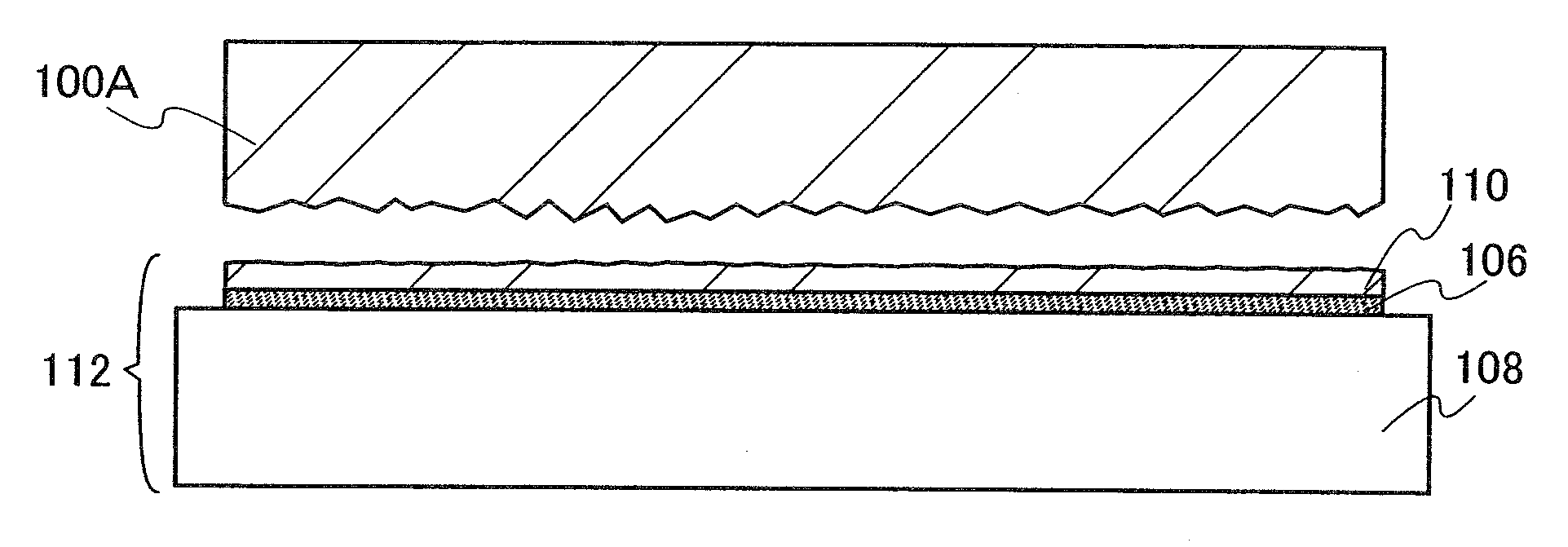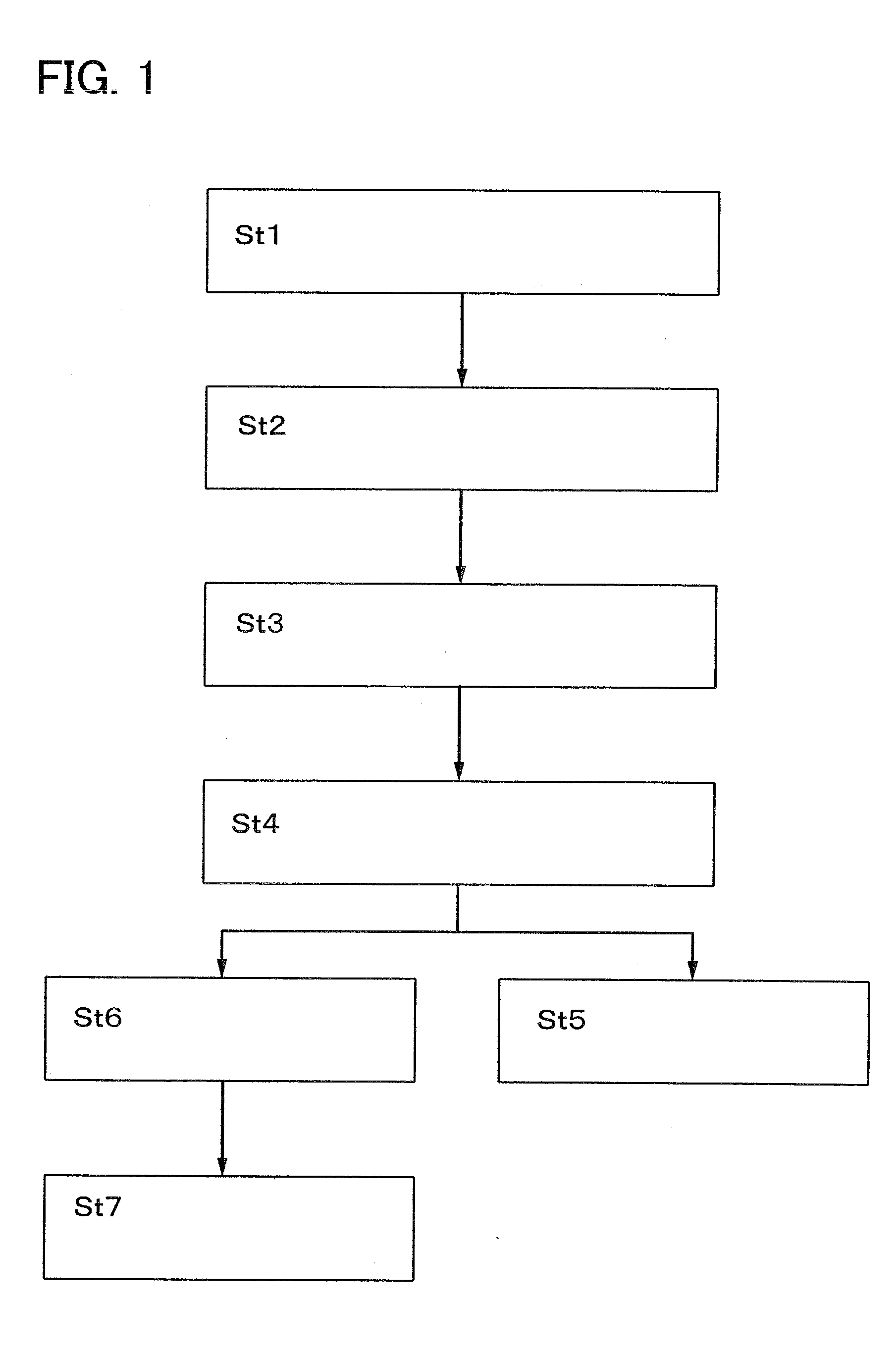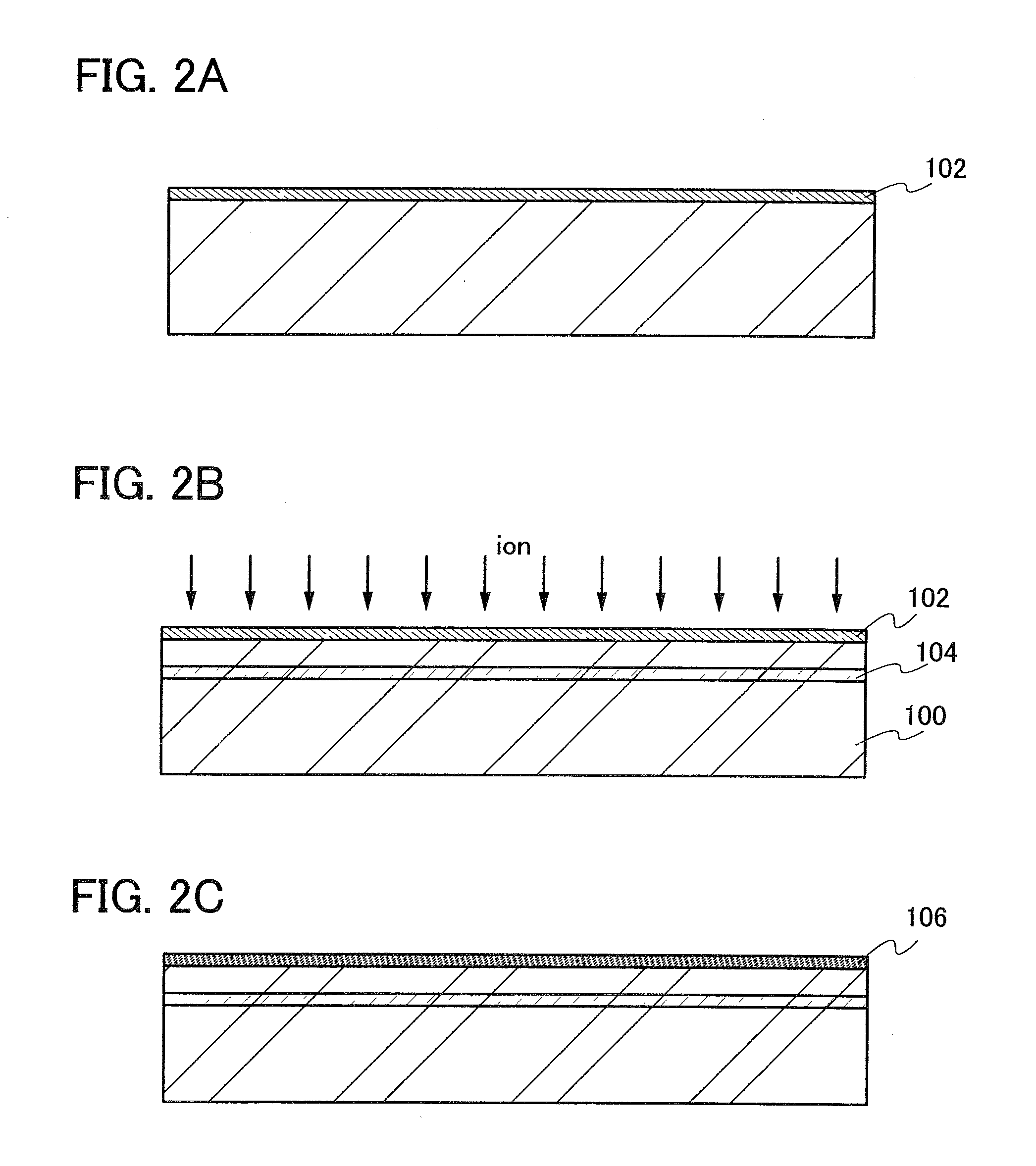Method for manufacturing semiconductor substrate
- Summary
- Abstract
- Description
- Claims
- Application Information
AI Technical Summary
Benefits of technology
Problems solved by technology
Method used
Image
Examples
embodiment modes
[0036]An example of a manufacturing method of a semiconductor substrate in Embodiment Modes of the present invention will now be described with reference to drawings. However, the present invention can be embodied in many different modes and it is easily understood by those skilled in the art that the mode and detail thereof can be variously changed without departing from the scope and spirit of the present invention. Accordingly, the present invention should not be interpreted as being limited to the description of the embodiment modes.
embodiment mode 1
[0037]The present invention relates to a planarization process of a single crystal semiconductor substrate after a thin film of single crystal semiconductor layer is separated from the single crystal semiconductor substrate. FIG. 1 is a flow chart illustrating a manufacturing process of a semiconductor substrate according to the present invention, as an example.
[0038]First, a protective film is formed over a single crystal semiconductor substrate and the single crystal semiconductor substrate is irradiated with an ion beam through the protective film to form an embrittlement layer (ion-implantation layer) (St 1). Then, a bonding layer is formed over the single crystal semiconductor substrate or a base substrate (St 2), and the single crystal semiconductor substrate and the base substrate are bonded to each other (St 3). Then, the single crystal semiconductor substrate is separated from the base substrate by heat treatment, using the embrittlement layer as a cleavage plane (St 4) and...
embodiment mode 2
[0083]In the method for manufacturing a semiconductor substrate described with reference to FIG. 1, FIGS. 2A to 2C, FIGS. 3A and 3B, and FIGS. 4A and 4B, if a base substrate having an upper temperature limit of 700° C. or lower such as glass is used, a bonding strength with a single crystal semiconductor substrate can be strengthened. Further, a wide variety of kinds of glass substrates such as a non-alkaline glass substrate can be applied for the base substrate. Accordingly, by using a glass substrate as the base substrate, a semiconductor substrate with a large size whose one side is more than one meter can be manufactured. When a plurality of semiconductor elements are provided for such a large-sized semiconductor substrate, a liquid crystal display and an electroluminescent display can be manufactured. In addition to such display devices, various kinds of semiconductor devices such as a solar cell, a photo IC, and a semiconductor memory device can be manufactured using a semicon...
PUM
 Login to View More
Login to View More Abstract
Description
Claims
Application Information
 Login to View More
Login to View More - R&D
- Intellectual Property
- Life Sciences
- Materials
- Tech Scout
- Unparalleled Data Quality
- Higher Quality Content
- 60% Fewer Hallucinations
Browse by: Latest US Patents, China's latest patents, Technical Efficacy Thesaurus, Application Domain, Technology Topic, Popular Technical Reports.
© 2025 PatSnap. All rights reserved.Legal|Privacy policy|Modern Slavery Act Transparency Statement|Sitemap|About US| Contact US: help@patsnap.com



